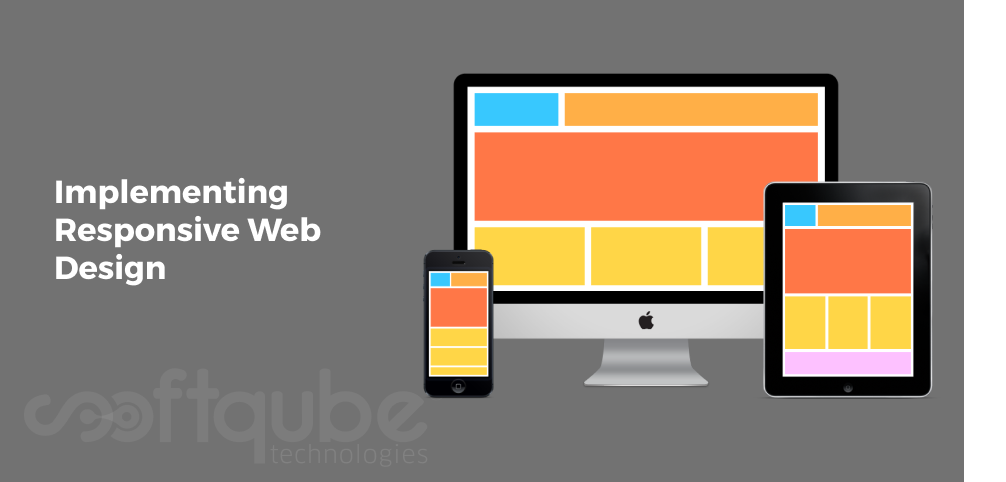Implementing Responsive Web Design
April 20, 2016

Today, responsive web design is a basic necessity for every website. It is an important trend that professionals must follow today. Responsive web design is needed to provide consistent user experience as now days more and more people are using mobile devices for surfing internet.

During last year, there was a tipping point for digital media when it was seen that maximum time is spent on mobile devices as compared to that of desktop. This was a sudden change with which everyone was surprised. Trends in mobile-web are constantly changing.
As per the statistics:
- Today, 80% Internet users own a smart phone.
- 67% consumers are willing to purchase a product or use any service from their mobile device itself.
- 89% people admitted that they search for any local business from their smart phones at least once in a week.
- US adults spend an average of 2 hours and 51 minutes in a day on their mobile devices.
- 40% searchers click on another mobile result in case they don’t find mobile friendly site. So, if you don’t have responsive website design then chances are there that your customers may divert towards your competitors.
If you feel that these statistics are boasting then take into consideration the fact that Google likes responsive web design. Now days, with Google’s new algorithm; it is penalizing those website owners who don’t have their websites transformed into a mobile compatible one.
This has made a greater impact in case that actually helps us to get higher rankings as some of the competitor’s sites are not mobile friendly and have gone down on Google.
It is necessary to make your website mobile friendly. Several professional firms are working hard to make sure that their clients choose the best technology and also prefer to get responsive website design.
How can this design be implemented; Is a thousand billion question and we have perfect answer for the same. So, read ahead to know the same…
- Making a Plan for responsive web design:Before you actually create the responsive design; it is necessary to think about the process through which your website will become accessible on different screen sizes that are used by the visitors.First of all, you must decide about the break points that one will be designing for. One may include minimum width and maximum width for different devices such as:
- Smart phones
- Tablets
- Desktop Screen resolutions and more.
Once the break points are determined then it is time to sketch out wireframes. These can help to identify several elements that will fit in as the screen contracts or expands. You can see how it looks.
- Be Flexible:In order to make a website flexible; one has to rely on the layout of the site. In responsive design, the grid systems were fixed and divided into number of columns say 12 or 16.Fluid grid systems are widely used to have flexible design for every screen say Hand held device to a large screen television. While making any website flexible, always keep images in mind.Along with images, include the code to make sure that visitor’s mobile device hardly offer zoomed out version of your site. It is advisable to set the viewport in order to provide instructions to the browser to display the site according to screen size
- Make it Mobile Friendly:There’s a wrong notion that responsive designs are mobile friendly however this is not the case every time. Responsive design may be visible easily on mobile devices however the main thing is to render proper user experience.An important thing to keep in mind here is your site should not be more than one column wide. Average space required for a single tap on your mobile screen in 44px. It is very simple to fit all of your elements in a linear page that users go through instead of trying to force them to navigate via small links and buttons.
- Test it frequently:You must be very well aware as to how your website scales as you resize the browser window. This is not a sufficient test. It is necessary to make use of various testing tools that are available to you including the automated tools. One must also test the site on n number of devices available.The main aim of any website is to render as much best experience as possible for its visitors so that they can get what exactly they are looking for. When people are unable to access the pages on your site, in sheer frustration they leave your website.However, if you have responsive design then there’s nothing to worry about as everything will seem to be perfect.
Take Away:
So, next time when you are planning to use responsive design; keep these things in mind. For more such tips and tricks; stay tuned to Softqube Technologies; well known website Design Company in India.
Share on







